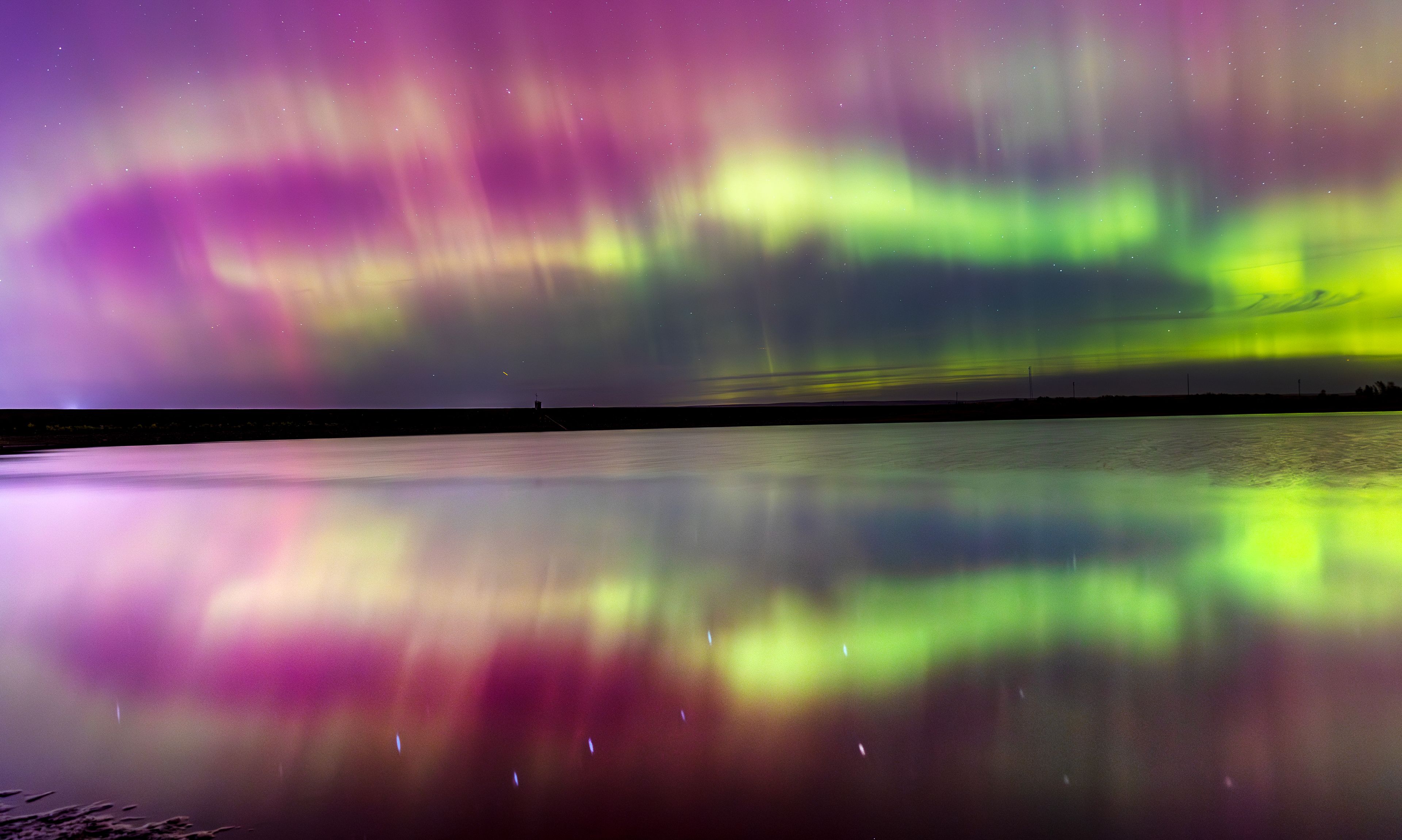The aurora borealis lights the sky north of Mann Lake on Thursday in the Lewiston Orchards. The light show was caused by a geomagnetic storm resulting from Earth being struck by charged particles, also known as plasma, that burst out from sunspot AR 3848, according to the National Oceanic and Atmospheric Administration. The plasma eruption is an example of coronal mass ejection which traveled to Earth at 2.9 million mph. The most recent storm reached G4 levels, the second highest, on the NOAA Space Weather Prediction Center scales. “We’re in for a ride the rest of this year, all of next year and even into 2026 before things will start to work their way back down to solar minimum,” Shawn Dahl, a forecast coordinator with the Space Weather Prediction Center, told CBS News.
Photo by
AUGUST FRANK
Lewiston Tribune








